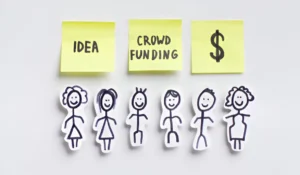Helping students develop emotional awareness and self-regulation has become just as important as teaching math, reading, and science. In today’s classrooms, educators are integrating designated areas and mindful practices to help students navigate stress, manage emotions, and return to learning with focus and confidence. These strategies not only benefit students individually but also create a calmer, more supportive classroom environment where everyone can thrive.
Why Emotional Wellness Matters in the Classroom
When students feel overwhelmed—whether by academic pressure, social interactions, or personal challenges—it can significantly impact their ability to focus and learn. Providing strategies and spaces for self-regulation helps students:
- Re-engage with lessons more quickly.
- Develop skills for handling challenges outside the classroom.
- Build empathy and understanding toward others.
Teachers have found that when emotional wellness is prioritized, the entire class benefits. Productivity improves, conflicts decrease, and students learn coping tools that will serve them for life.
Signs a Student May Need Support
Recognizing when students need a break is key. Educators often watch for patterns like:
- Sudden withdrawal from group activities.
- Physical restlessness or agitation.
- Emotional outbursts or uncharacteristic frustration.
Addressing these signs early can prevent disruptions and help students return to a calm state before stress escalates.
The Role of Dedicated Spaces
Some schools are introducing specialized areas—sometimes called reflection spots or self-regulation spaces—where students can take a moment to breathe and reset. These spaces often include sensory tools, comfortable seating, and prompts that guide students in naming their emotions. Used correctly, they become part of a proactive behavior management strategy, rather than a punishment.
Building a Supportive Environment for Every Student
A classroom that promotes self-regulation doesn’t just rely on one tool or method. It blends intentional design, educator guidance, and ongoing reinforcement of healthy habits.
Classroom Layout and Energy
Teachers often adjust their classrooms to include soft lighting, low-stimulation corners, and designated areas for regrouping. These elements make the environment feel safe, especially for students who may struggle with sensory overload or anxiety.
Everyday Mindfulness Routines
Beyond designated areas, incorporating daily mindfulness can be just as effective. Short breathing exercises or grounding techniques—done as a group—help students recognize and manage emotions before they become overwhelming.
Example Routine:
- Begin the day with two minutes of deep breathing.
- Transition between lessons with a quick body stretch.
- End the day with a gratitude reflection to close on a positive note.
These routines not only help students regulate themselves but also reduce stress for teachers by creating predictable, calming transitions.
Encouraging Student Ownership
Students respond well when they understand that these tools and spaces are theirs to use, not just teacher-enforced solutions. When they have a say in choosing calming activities or tools, they’re more likely to take responsibility for their emotions and use the strategies effectively.
Tools and Techniques That Encourage Self-Regulation
While creating supportive spaces is a first step, the strategies and tools within them are what help students learn and practice emotional regulation consistently.
Sensory-Based Tools
Items like stress balls, textured objects, and visual timers can help students redirect their focus and calm heightened emotions. These tools allow students to regulate their senses before returning to learning activities.
Guided Reflection Prompts
Journals or visual prompts can help students name their emotions, identify triggers, and reflect on how they can re-enter class activities productively. Over time, this builds emotional vocabulary and self-awareness.
Visual Cues for Emotional Check-Ins
Color-coded charts or emotion wheels let students nonverbally express how they’re feeling. This not only helps educators understand their students better but also empowers students to communicate without fear of judgment.
Integrating Designated Calming Spaces
Schools often create dedicated areas, such as a calming corner, equipped with comfortable seating, sensory tools, and reflection activities. These spaces give students a healthy outlet to pause, reset, and return to the group with renewed focus.
Fostering a Culture of Emotional Awareness
Even with spaces and tools, the classroom culture determines whether students feel safe using them. Teachers can model vulnerability and emotional regulation themselves, making it clear that everyone—adults included—sometimes needs a moment to regroup.
Creating Consistent Routines
Consistency builds trust. When students know they won’t be judged for using a self-regulation space or tool, they’re more likely to use it before situations escalate. Educators often introduce these routines early in the school year so they become a natural part of the classroom flow.
Collaborative Conversations
Group discussions about emotions can normalize the idea that stress, frustration, and anxiety are common and manageable. These conversations help students see that they’re not alone and encourage empathy toward peers. In fact, such conversations are really helpful after enrichment programs and similar classes.
Involving Families
Extending these practices beyond the classroom can create a more stable environment for students. Sharing strategies and resources with families—like how to set up a similar space at home—helps reinforce self-regulation skills.
Tips for Families to Support Emotional Growth at Home:
- Create a quiet area where a child can reset when feeling overwhelmed.
- Introduce simple mindfulness practices like breathing exercises.
- Encourage open conversations about feelings during everyday moments.
Looking Ahead: The Lasting Impact on Students
Equipping students with emotional regulation skills isn’t just about improving classroom behavior—it’s about preparing them for life. These strategies foster resilience, build confidence, and help children approach challenges with a sense of control and calm.
Educators who integrate practices like designated reset spaces and mindfulness routines often find that they not only improve student outcomes but also create a more balanced and supportive teaching environment.
For classrooms looking to create these dedicated areas, exploring resources such as a thoughtfully designed calming corner can provide a strong foundation. By giving students the tools to pause and reset, educators help them not just succeed academically but thrive emotionally.
Also Read-Data Science Innovations Transforming the Fintech Landscape








